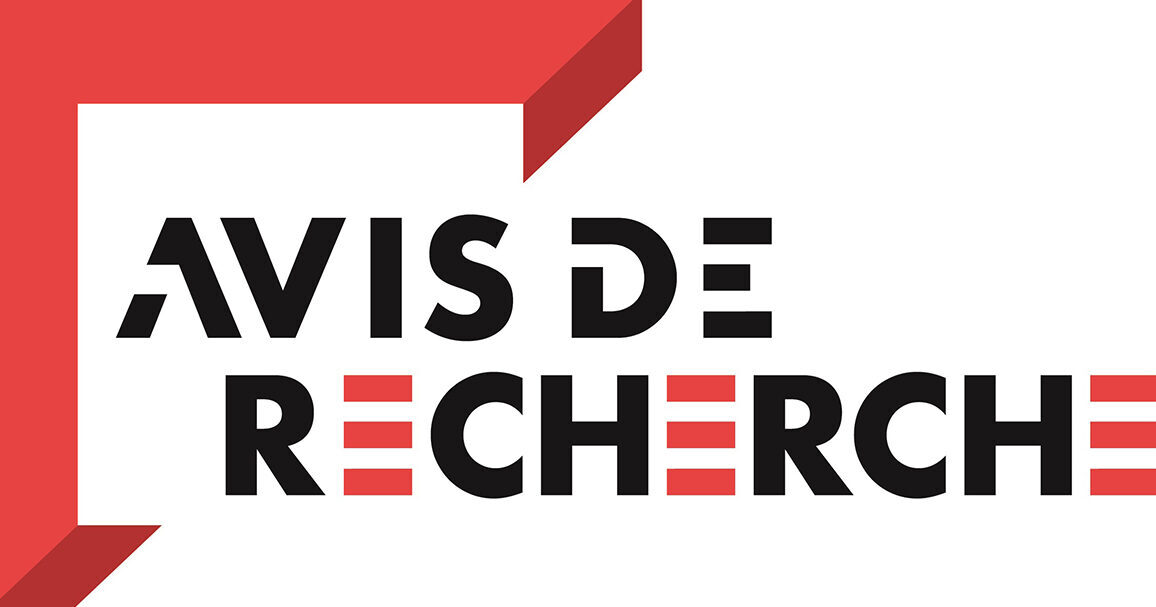Katherine D'Avignon
Professeure
Département
Département de génie de la construction
Formation
B.Ing., Ph.D. (Polytechnique Montréal)
Bureau
A-1481
Courriel

Vue d'ensemble
D'Avignon, Katherine
Unité de recherche
Axes de recherche
- Infrastructures et milieux bâtis
Expertises
- Efficacité énergétique des bâtiments
- Systèmes de chauffage, ventilation et conditionnement de l'air
- Confort thermique
- Stockage thermique
Cours
Encadrements
- En codirection avec : Hallé, Stéphane
Displacement Ventilation in Early Childhood Education (ECE) Facilities, par Youssef,Farah
Hiver 2024 - En codirection avec :
Improving the Analysis of Radiant Thermal Effects on Children, par Youssef,Nour
Hiver 2024
- En codirection avec :
Évaluation du rôle des accumulateurs thermiques électriques à briques dans l'électrification des réseaux de chauffage hydronique de bâtiments scolaires au Québec, par Ngansop Ngopjop,Eve Patricia
Été 2021 - En codirection avec :
Inventaire et analyse du stockage thermique dans le parc immobilier institutionnel québécois, par Ido,Eyé Imelda
Automne 2020 - En codirection avec : Levasseur, Annie
Analyse du potentiel de réduction d'émissions de gaz à effet de serre du stockage thermique dans les bâtiments, par El Ichy,Imane
Hiver 2020 - En codirection avec :
Usage de l'hydrothermie pour le déglacage hydronique des chaussées, par Cornille,Vladimir
Été 2018 - En codirection avec :
Analyse du rendement énergétique de trois écoles primaires à la suite de l’installation d’accumulateurs thermiques électriques, par Baré,Milena Kalzou
Été 2023 - En codirection avec : Haillot, Didier
Étude de systèmes de stockages thermiques latents pour la transition énergétique des bâtiments institutionnels québécois : retour d'expérience et perspective, par Lesniak,Matthieu
Été 2021 - En codirection avec :
Analyse de l'effet des accumulateurs thermiques électriques sur la pointe de puissance appelée de bâtiments scolaires, par Makhlouf,Abdelkrim
Hiver 2022 - En codirection avec :
Analyse de l'historique d'entretien des accumulateurs thermiques électriques, par Prévilon,Jerson Wallex
Hiver 2024 - En codirection avec :
Contribution des accumulateurs thermiques électriques à la transition énergétique des réseaux de chauffage hydronique de bâtiments institutionnels, par Danjou,Sullivan
Été 2021 - En codirection avec : Haillot, Didier
Caractérisation d’un système de stockage thermique latent installé dans une école québécoise, par Struve,Nicolas
Été 2021 - En codirection avec :
Analyse comparative énergétique d'un bâtiment institutionnel suite à l'installation d'un accumulateur thermique électrique, par Drouet,Julien
Hiver 2022 - En codirection avec :
Étude du potentiel de remplacement d'un système de chauffage au combustible de l'Église de Saint-Paul-de-la-Croix par un système solaire avec stockage thermique, par Wary,Patrice
Hiver 2024
- En codirection avec :
Atteinte des requis énergétiques de la norme du bâtiment à carbone zéro (BCZ-DESIGN) pour un garage d'autobus situé dans un climat froid, par Louisnard,Thibault
Hiver 2021 - En codirection avec : Papineau, Christiane
Étude des facteurs d'intérêt pour les améliorations écoénergétiques majeures dans le parc immobilier institutionnel: emphase sur le volet d'approvisionnement, par Lambert,Maxime
Été 2021 - En codirection avec :
Analyse du profil d'appel de puissance de bâtiments institutionnels à la suite de l'installation d'accumulateurs thermiques électriques, par Charbonneau,Julien
Été 2022 - En codirection avec :
Test de performance in situ d'accumulateurs thermiques électriques, par Ghodbane,Rabah
Été 2021
- En codirection avec :
Stage en recherche et développement sur la performance énergétique des pompes à chaleur air-air à capacité variable intégrées dans un bâtiment résidentiel, par Anjjar,Sabrine
Été 2021
- En codirection avec : Courchesne-Tardif, Antoine
Évaluation du stockage thermique à des fins d'efficacité énergétique dans un bâtiment commercial, par Nadeau,Vincent
Hiver 2024 - En codirection avec :
Hydrothermie et réseau thermique, une solution pour une transition énergétique optimale et résiliente, par Cros,Maria
Été 2024
- En codirection avec :
Faciliter la mise en oeuvre de l'accumulateur thermique électrique centralisé pour la gestion de la demande et la décarbonation du chauffage des bâtiments institutionnels, par Chabot,Vincent
Hiver 2023 - En codirection avec : Monfet, Danielle
Décarbonation des serres via l'usage d'accumulateurs thermiques électriques centraux, par Laroche,Mathieu
Été 2024
Publications
- V. Cornille, K. D’Avignon. 2018 « L’hydrothermie : défis et avantages ». Affiche présentée lors de la conférence : Congrès annuel de l’AQME : l’efficacité énergétique à l’heure de la décarbonisation (Montréal, QC, Canada, 31 mai 2018)
- Nour Youssef, Katherine D'Avignon. 2023 « Investigation into the pertinence of using child-specific radiation data for thermal comfort calculations ». ASHRAE Transactions vol. 129 , nº 2
- Nour Youssef, Katherine D'Avignon. 2021 « Evaluating thermal comfort of children: A perspective on commonly used methods ». ASHRAE Transactions vol. 127 , nº 2. p. 569-579
- David Sun, Andreas Athienitis, Katherine D'Avignon. 2019 « Application of semitransparent photovoltaics in transportation infrastructure for energy savings and solar electricity production: Toward novel net‐zero energy tunnel design ». Progress in Photovoltaics: Research and Applications vol. 27 , nº 11. p. 1034-1044
- Katherine D'Avignon, Michaël Kummert. 2018 « Modeling horizontal storage tanks with encapsulated phase change materials for building performance simulation ». Science and Technology for the Built Environment vol. 24 , nº 4. p. 327-342
- Katherine D'Avignon, Michaël Kummert. 2016 « Experimental assessment of a phase change material storage tank ». Applied Thermal Engineering vol. 99. p. 880-891
- Katherine D'Avignon, Michaël Kummert. 2015 « Assessment of T-history method variants to obtain enthalpy–temperature curves for phase change materials with significant subcooling ». Journal of Thermal Science and Engineering Applications vol. 7 , nº 4
- Katherine D'Avignon. 2022 « Constats sur l'utilisation d'accumulateurs thermiques électriques pour l'électrification de chaufferies institutionnelles ». Communication lors de la conférence : Webinaire - Association des gestionnaires de parcs immobiliers institutionnels (AGPI) (Montréal, QC, Canada - En ligne, 2 juin 2022)
- Katherine D'Avignon. 2022 « Stockage thermique et exemplarité de l'état - Résultats, constats et recommandations ». Communication lors de la conférence : Table ronde de la Communauté de pratique de l'exemplarité de l'État (CoPex) (Montréal, QC, Canada, 28 avr. 2022)
- Katherine D'Avignon. 2022 « Étude de cas : Les accumulateurs thermiques dans les écoles : Résultats, constats et recommandations ». Communication lors de la conférence : Brookfield Global Integrated Solutions (Montréal, QC, Canada, 20 mai 2022)
- Katherine D'Avignon, Michel Fournier. 2022 « Les accumulateurs thermiques en appui à la transition énergétique des bâtiments institutionnels ». Communication lors de la conférence : Séminaire du développement durable 2022 du Chapitre de Montréal de l'ASHRAE (Montréal, QC, Canada, 30 mai 2022)
- Nour Youssef, Katherine D'Avignon. 2021 « Evaluating thermal comfort of children: A perspective on commonly used methods ». Communication lors de la conférence : 2021 ASHRAE Virtual Annual Conference (Phoenix, AZ, USA - En ligne, June 28-30, 2021)
- Katherine D’Avignon. 2018 « Technologies de stockage thermique : amélioration du profil énergétique et de la résilience ». Communication lors de la conférence : Rendez-vous Multi Énergies de l'Association des gestionnaires de parcs immobiliers institutionnels (AGPI) (Montréal, QC, Canada, 12 avril 2018)
- Katherine D’Avignon. 2018 « Technologies de stockage thermique : amélioration du profil énergétique et de la résilience ». Communication lors de la conférence : Rendez-vous Multi Énergies de l'Association des gestionnaires de parcs immobiliers institutionnels (AGPI) (Québec, QC, Canada, 18 avril 2018)
- Ali Saberi-Derakhtenjani, Katherine D'Avignon, Andreas K. Athienitis. 2018 « Development of a predictive control methodology for a hydronic de-icing system for urban infrastructure ». Communication lors de la conférence : ITS World Congress 2018 (Copenhagen, Denmark, Sept. 17-21, 2018)
- Ali Saberi Derakhtenjani, Andreas Athienitis, Katherine D’Avignon. 2019 « A frequency domain methodology for design and control of radiant floor systems ».
- Ali Saberi Derakhtenjani, Andreas Athienitis, Katherine D'Avignon. 2019 « Analysis of thermal dynamics of hydronic de-icing system designs by means of control-oriented thermal models ».
- José A. Candanedo, Ali Saberi-Derakhtenjani, Katherine D'Avignon, Andreas K. Athienitis. 2018 « A pathway for the derivation of control-oriented models for radiant floor applications ».
- Ali Saberi-Derakhtenjani, Katherine D'Avignon, Andreas K. Athienitis. 2018 « Development of a predictive control methodology for a hydronic de-icing system for urban infrastructure ».
- David Yuan-Jae Sun, Andreas K. Athienitis, Katherine D’Avignon. 2018 « Application of semi-transparent photovoltaics in transportation infrastructure for energy savings and solar electricity production: towards novel net-zero energy tunnel design ».
- Francesca Macdonald, Katherine D'Avignon, Michaël Kummert, Ahmed Daoud. 2014 « A TRNSYS-LabVIEW bi-directional connection for HVAC equipment testing using hardware-in-the-loop simulation ».
- Katherine D'Avignon, Michaël Kummert. 2013 « Comparison of system-level simulation and detailed models for storage tanks with phase change materials ».
- Katherine D'Avignon, Michaël Kummert. 2012 « Proposed TRNSYS Model for Storage Tanks with Encapsulated Phase Change Materials ».
- Katherine D'Avignon. 2022 « Stockage thermique et exemplarité de l’état :Résultats de l’étude, constats et recommandations ». École de technologie supérieure. 91 p.
- Andreas K. Athienitis, Katherine D’Avignon, Leon Wang, Ted Stathopoulos, Prag Pillay, Ciprian Alecsandru. 2019 « Efficacité énergétique et déglaçage des entrées et sorties sans utilisation de sel du tunnel Louis-Hippolyte-La fontaine : Projet R792.1: Rapport final : Phase 3 : Synthèse et préparation à la réalisation ». Montréal : Université Concordia pour le compte du Ministère des Transports.

